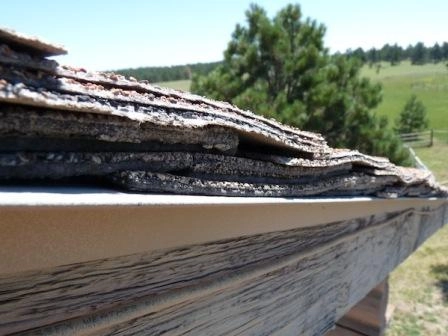A roof is a vital component of your home’s structure, protecting it from the elements and ensuring your safety and comfort. Over time, your roof may require maintenance or repairs, and if you’re dealing with multiple layers of shingles, you might be wondering, “Can you repair a roof with two layers of shingles?” This article will explore the challenges and considerations involved in repairing a roof with two shingle layers and provide guidance on making the right decision for your roofing needs.

Understanding the Two Layers of Shingles
The Double Shingle Dilemma
A double-layered roof means new shingles are installed over old ones, often for cost savings. Yet, it can complicate repairs and impact roof performance and longevity.
The Challenges of Repairing a Double Shingle Roof
Pros and Cons of Two Layers
Before diving into the repair process, let’s examine some of the advantages and disadvantages of having two layers of shingles:
Pros:
- Cost-Effective: The primary advantage of adding a second layer of shingles is cost savings. It eliminates the expense and labor associated with tearing off the old shingles.
- Added Insulation: The additional layer can provide extra insulation and improve energy efficiency.
Cons:
- Weight: Two layers of shingles add considerable weight to the roof, which can strain the structural integrity of your home. This is a critical concern that may necessitate reinforcement.
- Aesthetics: The roof may appear thicker due to the added layers, which can impact the curb appeal of your home.
- Shortened Lifespan: Multiple layers of shingles can shorten the lifespan of your roof because the new shingles may not adhere as well to the old ones, potentially leading to premature wear and tear.
- Roof Repairs: Repairing a double shingle roof is more challenging and may not yield the same results as repairing a single layer.
Can You Repair a Double Shingle Roof?
Assessing the Feasibility
Whether you can repair a roof with two layers of shingles depends on the extent of the damage and the condition of the shingles. Here are some factors to consider:
- Extent of Damage: Small, isolated areas of damage, such as a few missing or damaged shingles, can often be repaired without removing the entire roof. However, extensive damage or leaks may necessitate a more comprehensive approach.
- Shingle Condition: The condition of the shingles on both layers is crucial. If the old shingles are in poor condition or if the layers are not adhering well, it may be more challenging to achieve a successful repair.
- Local Building Codes: Review local codes to check if multiple shingle layers are permitted and for any repair requirements.
- Professional Assessment: It’s advisable to have a professional roofer assess the condition of your roof and recommend the best course of action. They can provide expert guidance based on the specific circumstances.
Repair Options for Double Shingle Roofs
Choosing the Right Approach
- Partial Replacement: In cases of localized damage, a partial replacement can be a viable solution. This involves removing the damaged shingles and replacing them with new ones. Keep in mind that this approach may not always address the underlying issues related to having multiple layers of shingles.
- Complete Tear-Off: When your roof requires extensive repairs or if you’re dealing with poor shingle adhesion due to the multiple layers, a complete tear-off may be the most effective option. This involves removing all layers of shingles and starting with a fresh, single-layer roof.
- Roof Over: In some cases, you can add a new layer of shingles on top of the existing two layers, but assess this option carefully due to potential weight and aesthetic concerns.
Conclusion
Repairing a roof with two layers of shingles presents its unique challenges and considerations. Partial replacements suit localized damage, but extensive issues may require complete tear-offs or alternatives. Consult a professional roofing contractor for tailored expert advice on your double shingle roof.



Leave a Reply